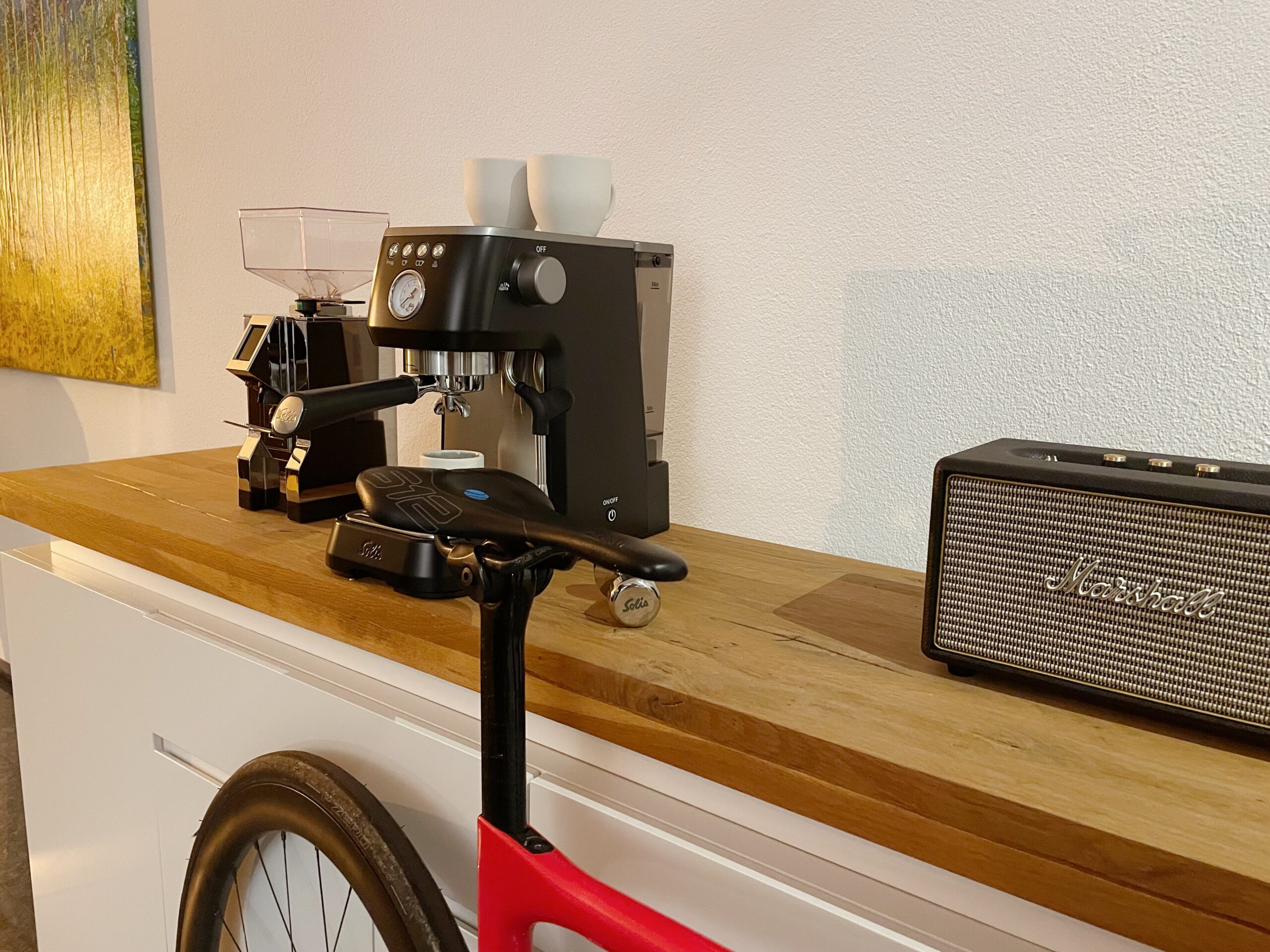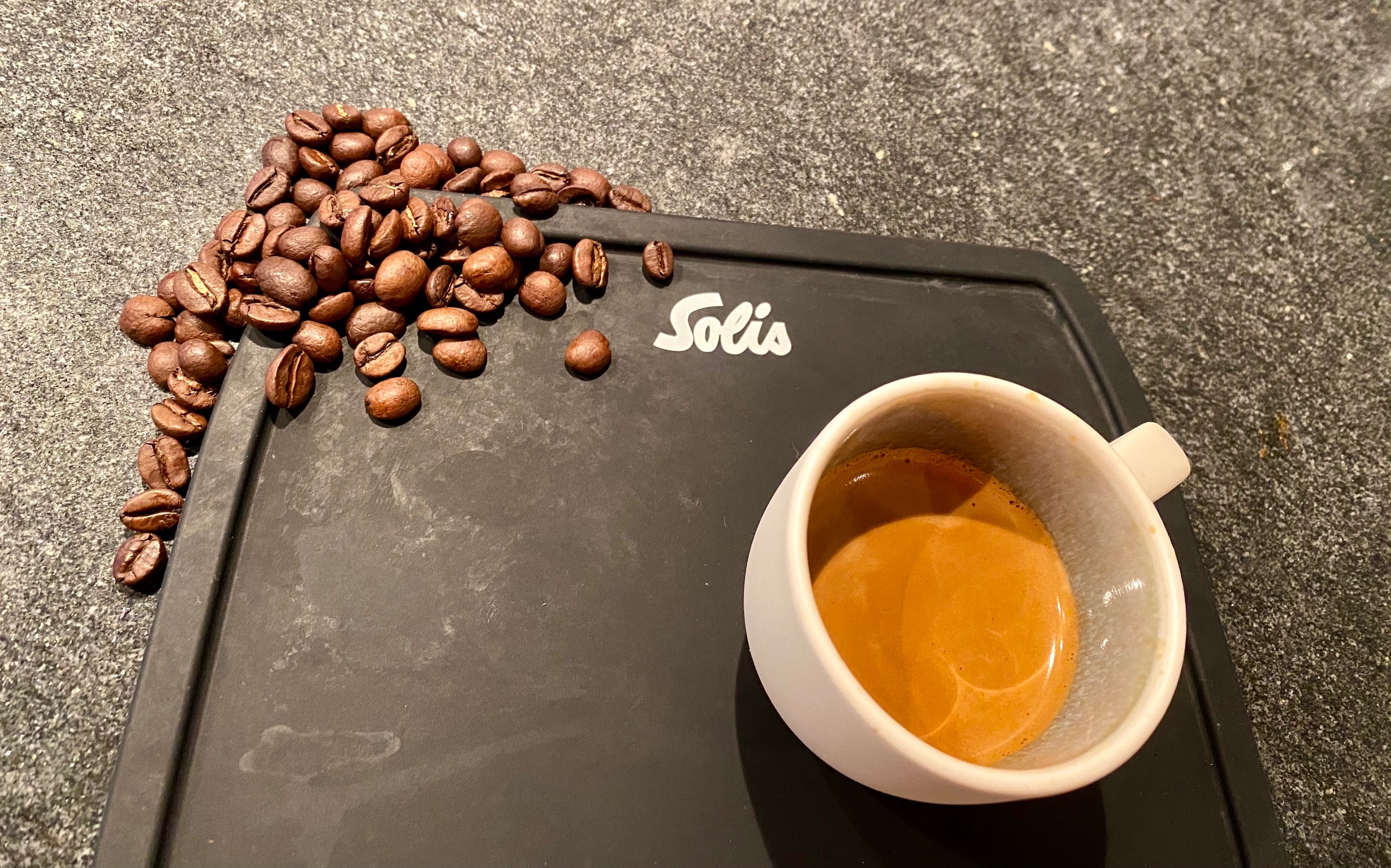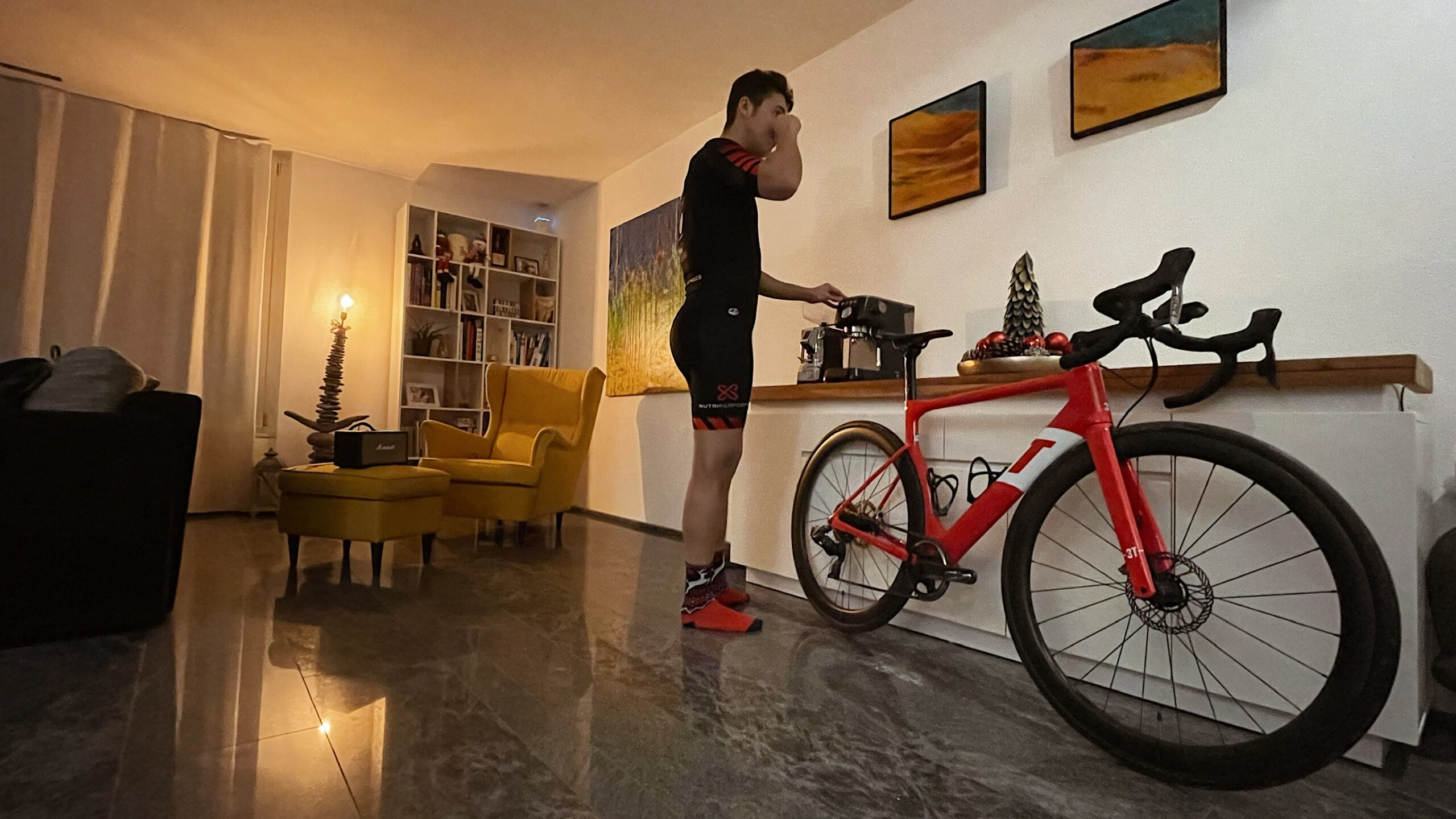Coffee and Training – a special bond
My training and nutrition plans always have coffee as a constant. Because I strongly believe in their activation and metabolic acceleration power. In partnership with Solis of Switzerland AG I will explain the relevant science behind coffee and why it is so useful for our training and diet.

Standing here in front of my Solis Barista Perfetta, I can see a little magic in the legend of Kaldi who in the ancient Ethiopian mountains discovered his goats being more awake, energetic while jumping higher than usual after eating the berries of a mysterious plant. From that moment Kaldi discovered the disruptive properties of coffee and the link between goats and cyclists became tight as peanut butter and jelly.
All the mountain goats love coffee, all cyclists love coffee, all cyclists are mountain goats: as clear as it sounds. Jokes aside, we all know how coffee is mystical in relationships with endurance sport, and how the best coffee machines cracked their way into any cycling bus of the pro peloton as well as any house of amateur cyclists. But if you are here it is because you want to know more about the science behind coffee and the best ways to use caffeine as a training/nutrition booster.
Science behind caffeine
Methylxanthine alkaloid, better known as Caffeine, is a substance with stimulant characteristics massively present in coffee beans, of course, but also in dark chocolate, kola nuts, guarana seeds, tea, and citrus plants.
Caffeine works pretty easily from a chemical point of view: caffeine blocks adenosine receptors pushing the body increasing dopamine and noradrenaline production affecting the central nervous system making our body and mind more awake, alert, and receptive.
But being awake is not the only effect of caffeine on our bodies: caffeine makes the muscles’ cells release calcium with a subsequential slowing of calcium reuptake. In drinkable words: caffeine increases the power output of your muscles.
The last interesting effect of caffeine on the human body is its role in fat burning. Caffeine inhibits phosphodiesterase with the consequence of boosting the metabolism and pushing away the perception of fatigue and exertion.
So, after a good cup of coffee, you will be more powerful, active and your burning fat capacities will go over the roof.
How much coffee is healthy to drink?

We all heard about pro cyclists drinking double digits double espresso double cups. But this is not a good benchmark for the human body, and more than often this behavior trespasses into fanatism.
Let’s start by saying that everybody is different, but there are golden rules:
- The recommended maximum caffeine intake for an adult is 400mg per day
- The recommended maximum caffeine intake for a pregnant or breastfeeding person is 200mg per day
- The quantity needed to boost the metabolism is 3 to 4mg per kg (body weight)
- The quantity needed to push focus and stimulate our nervous system starts with 100mg
All clear, but how much caffeine can we find in different products?
- Coca Cola: 8mg of caffeine per 100grams (ca 24.9mg into a regular can)
- Black Tea: 20mg of caffeine per 100 grams (ca 47.4mg per cup)
- Dark Chocolate: 43mg of caffeine per 100 grams (ca 69.7mg per chocolate bar)
- Coffee: between 70 and 300mg of caffeine per 100 grams, depending on beans and brew techniques:
- Brew (150ml): 83mg caffeine
- Espresso (30ml): 65mg caffeine
- Instant coffee (150ml): 60mg caffeine
Many coffees but not so many coffee varieties
Let’s go into that. While there are many different ways of preparing a coffee (but a good espresso machine is definitely the best of the recipes) you can basically only find 2 varieties of coffee beans: Arabica and Robusta.
Arabica: delicate, fruity, flavory, complex, rich in sugar.
Robusta: strong, nutty, bitter, dark chocolate flavor, creamy, rich in caffeine.
Of course, there are many different blends if you want to make your magic potion out of it. If you like more the taste and smell of fruity morning, push in the Arabica. But if you really want that morning boost, go to your coffee roaster telling that Robusta is your nickname, so that robusta blend will slap you in your face and kiss you awake for your morning activities.
Coffee and your new morning routine

So, if you are training for your next Ironman or Granfondo, or you simply need an energetic boost for your busy mornings, here’s a routine for you.
- Get out of bed
- Warm up your espresso machine
- Go to the toilet and fresh up your life with some cold water on your face
- Put on your training clothes
- Back to the kitchen to prepare your double espresso: hot as hell, black like winter nights
- Drink your double espresso together with a nice and fresh glass of water
- Start your training
Coffee is really a game-changer in your morning and training routines and, even if Kaldi didn’t know about it, it changed our lives forever.





